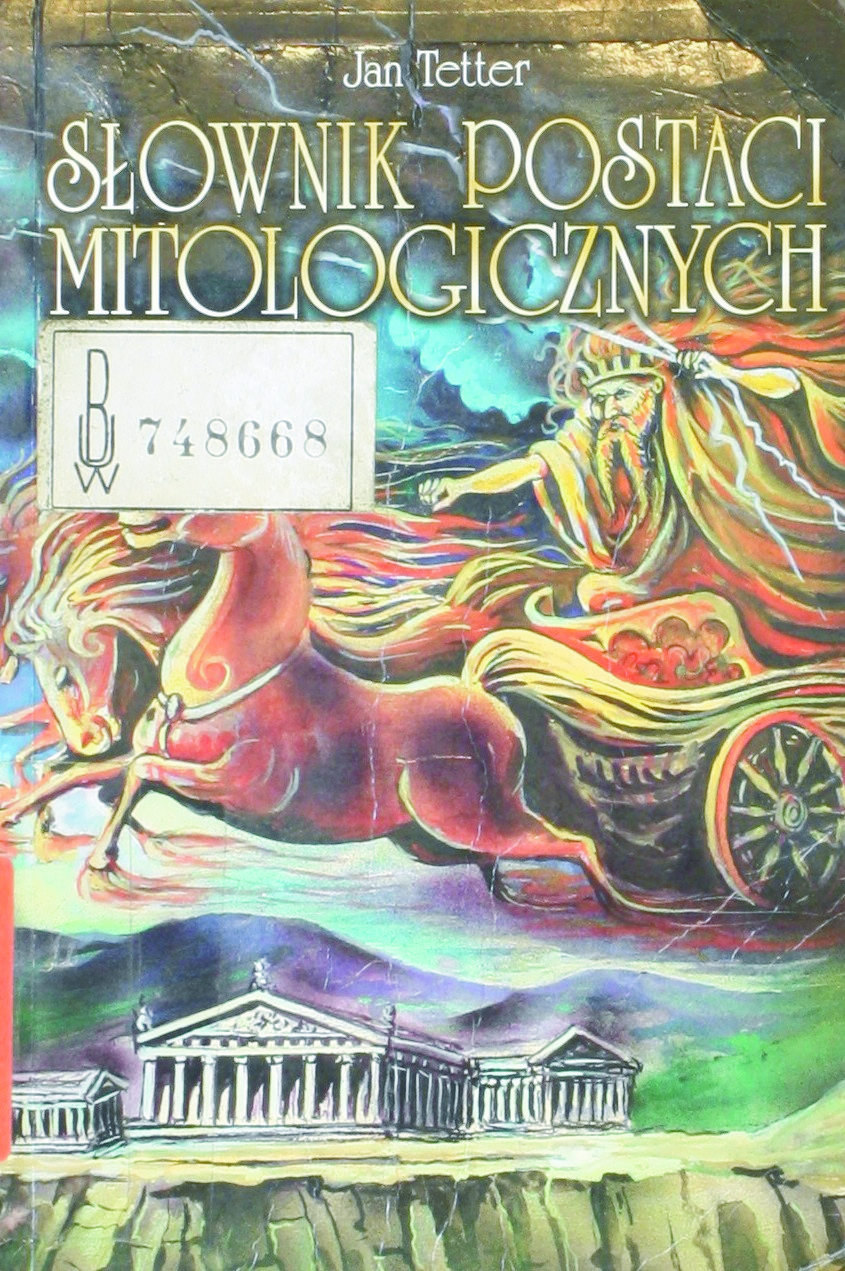Title of the work
Country of the First Edition
Country/countries of popularity
Original Language
First Edition Date
First Edition Details
Jan Tetter, Słownik postaci mitologicznych oraz najważniejszych pojęć związanych z mitologią Greków i Rzymian. Warszawa: Agencja Wydawnicza Nałęcz, 1999, 287 [1] pp.
ISBN
Genre
Glossary
Myths
Target Audience
Crossover (children, teenagers, young adults)
Cover
Cover by Bogdan Chudzyński. Courtesy of Wojciech Jasiński, Agencja Wydawnicza Ostroróg.
Author of the Entry:
Summary: Katarzyna Sendecka, University of Warsaw, katarzyna.sendecka@student.uw.edu.pl
Analysis: Marta Pszczolińska, University of Warsaw, m.pszczolinska@al.uw.edu.pl
Peer-reviewer of the Entry:
Katarzyna Marciniak, University of Warsaw, kamar@al.uw.edu.pl
Elżbieta Olechowska, University of Warsaw, elzbieta.olechowska@gmail.com
Photograph courtesy of the Author.
Jan Tetter
, b. 1935
(Author)
A writer, journalist, translator and playwright, Jan Tetter, studied sciences and sociology in Gdańsk and Poznań. Author of over 20 titles: books, plays and radio broadcasts. Recognised for his children’s books, including the beautifully illustrated (by Janusz Grabiański) Ryży Placek i trzynastu zbójców [Foxy Placek and the Thirteen Thieves], 1972; Ryży Placek i portowa kompania [Foxy Placek and the Harbour Companions], 1979, and more.
The bio is based on the material kindly provided by the Author, with addenda by Katarzyna Sendecka.
Bio prepared by Katarzyna Sendecka, University of Warsaw, katarzyna.sendecka@student.uw.edu.pl
Summary
Based on: Katarzyna Marciniak, Elżbieta Olechowska, Joanna Kłos, Michał Kucharski (eds.), Polish Literature for Children & Young Adults Inspired by Classical Antiquity: A Catalogue, Faculty of “Artes Liberales”, Warsaw: University of Warsaw, 2013, 444 pp.
With its small, pocket format and short, concise entries, this glossary provides young readers with an enjoyable and not overly complicated introduction to the world of Greek myths. Focused mainly on events, the book treats myths as a starting point and ventures to explain some genealogy and history of Greek gods and heroes. The events are described concisely and in a straightforward manner, while the book’s simple language and small format allow for easier access. Complex stories and alternative versions are omitted, so a beginner can easily navigate the mythology. The author also pays great attention to words and phrases used in modern language, related to culture and literature but originating in Greek mythology. Their origin and meaning are explained, and children can decode such phrases as the Golden Fleece or the Augean Stables. Moreover, the author ventures a bit further, answering questions about what the myths were explaining and what purpose they served (for example, the symbolic meaning for the people in ancient times of Zeus’ lightning bolt).
Analysis
The publication is not a scholarly one; no footnotes to provide ancient sources or bibliography. The only goal is to familiarise the reader with basic information. The glossary seems intended for school readers, crosswords amateurs, and other people who need additional information on a mythical character, ancient author, place, or concept. The author values simplicity; accordingly, the entries are short and contain only vital data. Different characters bearing the same name are included in a standard entry and differentiated by a number. Many minor characters of secondary importance are included, which confirms the author’s intention to use the glossary for crosswords, quizzes, or charades. Many entries include a reference; for example, the entry on the Golden Rain links with the entries Danae, Perseus and Acrisius. In the case of alternative names, the entry refers to the main entry about the character allowing to identify the most popular usage of a proper name, simultaneously showing the presence of Greek names in today’s modern language. The entries contribute to a rich web of mutual connections. The book ends with an index, a table of the Roman equivalents of seventeen Greek deities, explanations of five complex terms and an afterword. The author declares that knowledge of Greek mythology is an absolute must for an educated contemporary man. Due to the explicit references to extramarital or incestuous relationships, this glossary is not aimed exclusively at school children. See, for instance, the entry Zeus’ Wives and Lovers, where the names of seduced characters are mentioned and most of the described acts, defined as incestuous. According to the entry, Greek mythology does not pass judgement on moral issues: “mythology does not judge those amorous conquests from a moral standpoint, primarily because they were symbolic explanations of phenomena in the natural world and should not be understood literally” (p. 258).
Further Reading
Jan Tetter at Wikipedia.pl (accessed: March 12, 2013).
Grimal, Pierre, The Concise Dictionary of Classical Mythology, ed. by Stephen Kershaw, trans. by A. R. Maxwell-Hyslop, Basil Blackwell Ltd, 1990.
Irmscher, Johannes et al., eds., Lexicon der Antike, Leipzig : VEB Bibliographisches Institut, 1971.
Addenda
Cover, graphic design: Bogdan Chudzyński.




